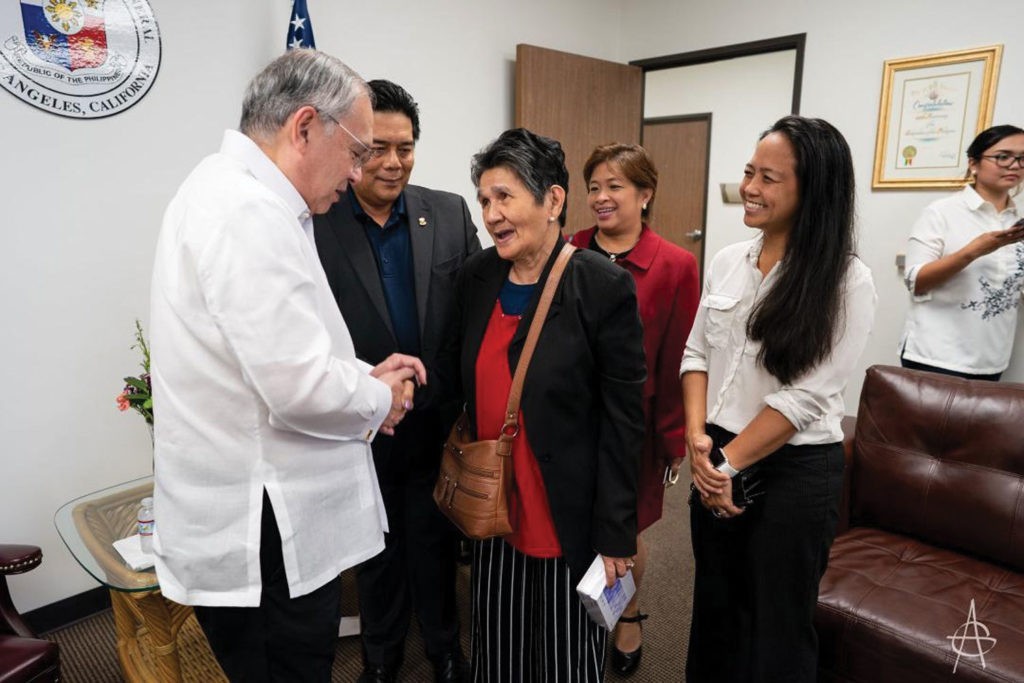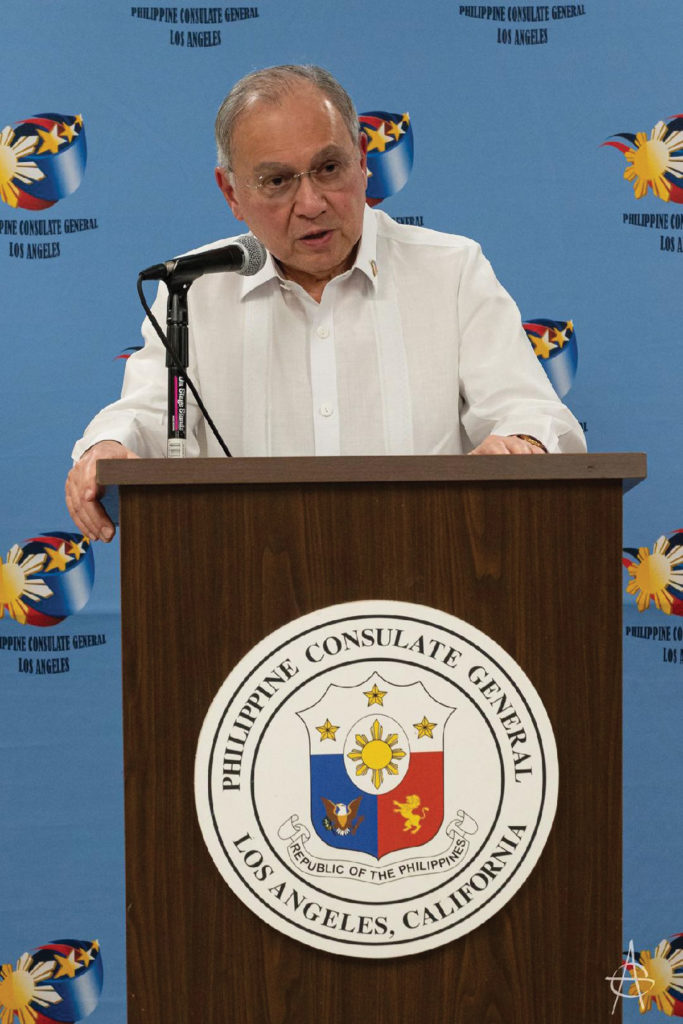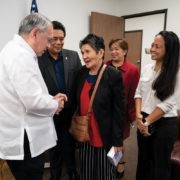
PHILIPPINE Ambassador to the United States Jose Manuel Romualdez had a packed schedule in Los Angeles this past week as he met with several Filipino American community organizations and businesses to boost ties between the two countries.
One event on his itinerary included a town hall session with members of the Fil-Am community at the Consulate on Sunday night, September 15, during which he touted that the Philippines is experiencing a “golden age of infrastructure” and assured the audience that the country would not give up its claims over the West Philippine Sea.
“We are making a lot of headway in terms of economic growth and performance, boosted by significant reforms that are being implemented by the administration for President [Rodrigo] Duterte,” Romualdez told the audience, citing examples, such as the Build, Build, Build program, universal health care and comprehensive tax reform to address “the persistent problems that have hampered Philippine growth.”

The ambassador also expressed a vision that for a more unified Fil-Am community.
“We envision Filipinos from all over the United States coming together someday in a show of solidarity…to highlight the strength in numbers of the Filipinos diaspora right at the heart of the U.S. government. We hope that this number of 4.3 million will one day be together and be a strong force,” he said.
Duterte has directed that the major infrastructure projects like the Sangley Point Airport in Cavite and Metro Manila Subway be completed by the end of his term.
“Apart from the surging economy, we also have a young, dynamic, tech savvy population and a democracy that is made even more vibrant by advances in the communications technology field,” Romualdez said, admitting that there are some challenges such as good governance and economic inclusiveness that the country faces so it seeks outside help, such as from the United States.
“One example of this is creating more trade and investment opportunities with the United States,” he added. “We hope that many of you who are in business or just ordinary Filipino Americans can at least tell the story that there’s a lot of things going on in the economy of the Philippines.”
The U.S. continues to be the Philippines’ third-largest trading partner and number one destination for many Filipino exports. The country has also invested around $3.3 billion into the Philippines in the last five years alone.
Labor rights as priority
Prior to his town hall, Romualdez met with Fedelina Lugasan, also known as Nanay Fedelina, an 83-year-old woman who was trafficked to the United States and held captive by multi-generations of a Filipino family for 65 years. She was accompanied by Pilipino Workers Center (PWC) Executive Director Aquilina Soriano Versoza and operations manager Malou Villacisneros.
Lugasan, who was born in Leyte, Philippines and recruited at the age of 16 by her employer, shared her wish to go back to her home country and visit Malacañang once her human trafficking visa is approved.
“[With] the example of Nanay Fedelina, we’re grateful that the U.S. government has taken the lead in prosecuting those involved in this, but at the same time, let it be an example to those are perhaps still involved in human trafficking…time is running out because the world is really going after human traffickers and the Philippines is no exception,” Romualdez told the Asian Journal.
Lugasan’s case is not an isolated one as modern-day slavery still persists, and the Philippine Consulate has recognized the need to be more vigilant as it happens in the Fil-Am community by having a labor attaché in Los Angeles.

“The program of this government is to precisely to protect many of the Filipino workers that we have. It’s unfortunate that here in the United States, which is a highly developed country, it can happen here,” the ambassador added. “Can you imagine what can happen in many other parts of the world where access for justice is very limited?”
The ambassador on Monday also met with Los Angeles Mayor Eric Garcetti and was invited for a luncheon at Cedars Sinai Medical Center, which employs over 3,000 Filipino Americans.






